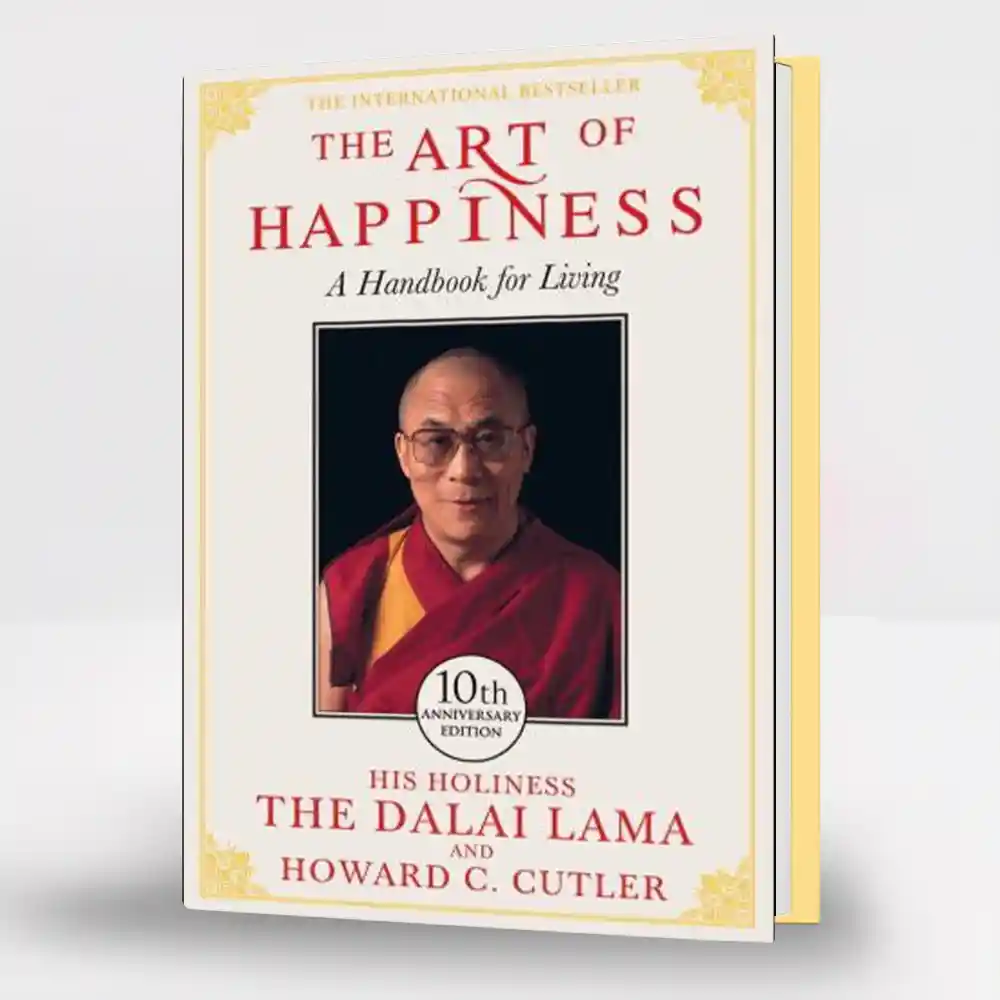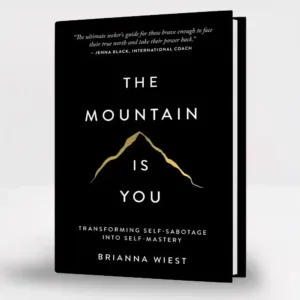The Art of Happiness is a profound exploration of the concept of happiness, blending insights from psychology, philosophy, and Buddhist teachings. Co-authored by the Dalai Lama and psychiatrist Howard Cutler, the book provides practical advice and timeless wisdom on how to cultivate a fulfilling and joyful life. It emphasizes the importance of compassion, emotional resilience, and mindfulness in achieving true happiness.
Need help? Call us:
+1 1800 212 3434
Shopping cart (1)
Subtotal: $2.00
Spend $3,048.00 to get free shipping
Congratulations! You've got free shipping.
Menu
Categories
- Personal Success
- Anxiety Disorders
- U.S. History
- Magical Realism
- Faith and Belief
- Psychology
- Technology
- Poetry
- Mental Health
- Current Affairs
- Non-Fiction
- Language Arts
- Education
- Web Development
- Romance & Love Stories
- Personal Growth
- Personal Finance
- Speculative History
- Communication Skills
- Islamic Studies
- Family Saga
- Science & Technology
- Religion
- Wealth Management
- Entrepreneurship
- Personal Development
- Biographies
- Political Science
- Inspirational
- Self-Help
- Writing
- Investment Strategy
- Fantasy
- Mystery & Thrillers
- Children’s Book
- Art Instruction
- Autobiography
- Business
- Career Management
- Politics
- Spirituality
- Literature
- Comics
- Drawing & Sketching
- Political Memoir
- Ancient History
- Indian Literature
- Middle Eastern Studies
- Time Management
- Domestic Drama
- Cookbook
- Visual Arts
- Lifestyle
- Philosophy
- Drama
- Sports
- Music
- Finance
- History
- Leadership Skills
- Social Science
- Linguistics
- Political Fiction
- Leadership
- Cultural Studies
- Investment
- Motivation
- Teacher Training
- Safety
- Philosoph
- Religion & Spirituality
- Parenting
- Language Learning
- Trading
- Novel
- Teaching Methods
- Nonfiction
- Fiction
- Comparative Religion
- Family & Relationships
- Dictionaries
- Risk Management
“Give and Take” has been added to your cart. View cart
$5.00 Original price was: $5.00.$2.00Current price is: $2.00.
First Add your favorite books calculated at checkout.
The Art of Happiness
Author:
The Art of Happiness is a profound exploration of the concept of happiness, blending insights from psychology, philosophy, and Buddhist teachings.
18 people are viewing this product right now
Tags: Emotional Well-being, Happiness, Mindfulness, Self Help
Categories: Philosophy, Self-Help, Spirituality
Have any Questions?
Feel free to Get in touch
Print Length
248
Format
- Inner Happiness vs. External Factors:
The book emphasizes that true happiness comes from within, rather than from external achievements or possessions. It encourages readers to cultivate inner peace and contentment. - Role of Compassion:
Compassion is presented as a vital component of happiness. The authors argue that fostering compassion towards oneself and others leads to deeper connections and fulfillment. - Mindfulness and Presence:
Mindfulness is highlighted as a powerful tool for enhancing well-being. The practice of being present in the moment helps individuals reduce stress and appreciate life’s simple joys. - Resilience in the Face of Suffering:
The book explores how understanding and accepting suffering can lead to a greater appreciation for happiness. It encourages readers to view challenges as opportunities for growth. - The Power of Positive Thinking:
The authors advocate for cultivating a positive mindset as a way to influence happiness. This includes reframing negative thoughts and focusing on gratitude and optimism. - Interconnectedness of All Beings:
The concept of interconnectedness is central to the book. It highlights that recognizing our connection to others can enhance feelings of compassion and empathy, contributing to overall happiness. - Practical Steps for Happiness:
The book offers practical advice and exercises for readers to implement in their daily lives, such as practicing gratitude, engaging in acts of kindness, and nurturing relationships. - Cultural Perspectives on Happiness:
The authors discuss how different cultures define and pursue happiness, emphasizing that understanding diverse perspectives can enrich our own experiences of happiness.
- “Happiness is not something ready-made. It comes from your own actions.”
- “The purpose of our lives is to be happy.”
- “Compassion and love are the sources of true happiness.”
- “The best way to resolve any problem is to find a way to look at it with a positive attitude.”
- “Happiness is determined more by one’s state of mind than by external conditions.”
- What is the true nature of happiness?
Answer: Happiness is described in the book as an inner state of being rather than a temporary emotion. It is not solely dependent on external circumstances but is cultivated through one’s mindset, actions, and relationships with others. - How can we cultivate a more compassionate mindset?
Answer: The authors emphasize that compassion can be developed through practice. Engaging in acts of kindness, empathizing with others, and reflecting on the interconnectedness of all beings can help foster a compassionate outlook. - What role do our thoughts and attitudes play in our overall happiness?
Answer: Our thoughts and attitudes significantly influence our perception of happiness. The book argues that adopting a positive mindset, focusing on gratitude, and reframing negative experiences can enhance our overall well-being. - How can understanding suffering help us appreciate happiness?
Answer: The Dalai Lama teaches that suffering is a part of life, and understanding it can lead to a deeper appreciation for happiness. By recognizing the transient nature of both suffering and joy, we can develop resilience and a greater capacity for happiness. - In what ways can mindfulness practices enhance our sense of well-being?
Answer: Mindfulness practices, such as meditation and present-moment awareness, are shown to help individuals reduce stress, increase emotional regulation, and foster a deeper connection to their inner selves. These practices can promote a more balanced and fulfilling life. - What practical steps can individuals take to increase their happiness?
Answer: The book outlines several practical strategies, including practicing gratitude, developing healthy relationships, engaging in meaningful activities, and embracing compassion. These steps can help individuals actively work towards a happier life. - How does the concept of happiness differ across cultures?
Answer: The authors explore how different cultures perceive happiness, emphasizing that while the pursuit of happiness is universal, the methods and values associated with it can vary. Understanding these differences can provide a broader perspective on what happiness means.
Be the first to review “The Art of Happiness” Cancel reply
Related products
Sale!
The Richest Man in Babylon
Sale!
Sale!
The-mountain-is-you
Sale!
Awakening the third Eye
You may add any content here from XStore Control Panel->Sales booster->Request a quote->Ask a question notification
At sem a enim eu vulputate nullam convallis Iaculis vitae odio faucibus adipiscing urna.









Reviews
There are no reviews yet.